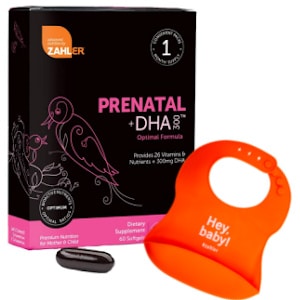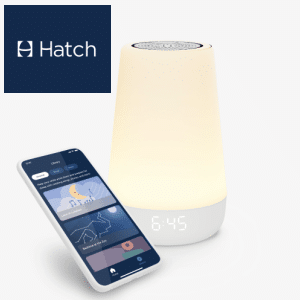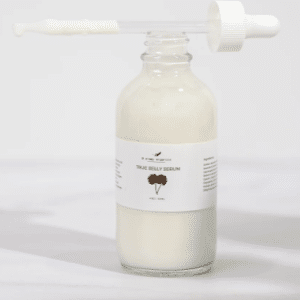Overview
If you enjoy the water, you don’t have to give it up when you are pregnant. Enjoying the water can be a great workout, relaxing, and even therapeutic. Along with the benefits, there are also risks you need to be mindful of to keep you and your baby safe. This episode examines the evidence on the benefits and risks of enjoying the water during pregnancy including swimming, pools, hot tubs, baths, and float spas.
Listen Now
Become a Pregnancy Podcast Premium member or log in to access all articles and episodes ad-free.
Article and Resources
The Beneficial Properties of Water
When you submerge your body in water, the pressure you feel is called hydrostatic force. This is proportional to the depth of immersion, which is why you feel more pressure the deeper in the water you go. Pregnancy impacts your body by weight gain, increased blood flow, and many more changes that can exert pressure on your cardiovascular system, joints, and spine. Enjoying being in water can be a great workout, relaxing and therapeutic. Even floating on the surface of the water can take pressure off your body and joints.
Are Pregnant Women More Buoyant?
You may have heard that you are more buoyant during pregnancy. On average, humans have a slightly lower density than water, which means that we float. Our density is a function of body composition, including lung capacity, muscle, fat, and center of gravity. During pregnancy, your body composition and center of gravity will change. Your lung capacity also decreases as your uterus grows and organs push your lungs upward. I could not find any definitive evidence to show how pregnancy could affect buoyancy. You may float better when you are pregnant, but I could not find evidence to back up that claim. Saltwater is denser than freshwater, and you will be more buoyant in salt water, regardless of whether or not you are pregnant.
Cooling off in Hot Weather
It is essential to stay cool in hot weather. Higher temperatures mean you have to pay more attention to your comfort and make sure you are not getting overheated. This isn’t just a theoretical risk. Recent research has shown that hot weather and exposure to high temperatures can increase the risks for stillbirth. Another study linked higher temperatures to lower birth weights. Getting in the water is a perfect way to cool off in hot weather. If you don’t want to spend an extended period in the water, even getting in and out can help cool you down. Plus, areas near the coast or water tend to be cooler.
Swimming
If you are looking at swimming solely for exercise, the evidence shows that it is safe during pregnancy, but it may not yield significant results. One study of 71 low-risk sedentary pregnant women randomly allocated half of the group to water aerobics or no physical exercise. They found no significant differences in any outcome measured, including weight gain, BMI, preterm birth, blood pressure, or heart rate. If you are specifically looking for an outdoor activity that does not strain your joints, swimming may be a good option. According to the American College of Obstetricians and Gynecologists, water workouts use many of the body’s muscles. The water supports your weight, so you avoid injury and muscle strain.
Water Immersion and Swelling
Many expecting mothers experience swelling in their legs, feet, and ankles during pregnancy. Water immersion puts pressure on your body, which can help with swelling. Floating or swimming reduces swelling because your body is not upright, and blood flow isn’t as restricted to your legs and feet. To increase the water pressure on your legs, you could stand in a pool, so there is more hydrostatic pressure on your legs since they are deeper.
If you do not have access to a pool and you are experiencing swelling in your ankles or feet, you can try soaking your feet in a bucket with water. If the water temperature is cooler, you may find some relief in that. One study compared leg elevation versus water immersion on leg edema. Half of the participants immersed their leg to the knee in a container filled with tap water for 20 minutes. The other group sat upright in a chair with legs elevated for 20 minutes above the heart level. The group who used leg elevation had slightly better results. 85% of the group who elevated their legs had no edema after doing this twice per day for two weeks. 75.5% of the group who submerged their legs in the water had no edema at the end of the study. From an evidence standpoint, elevating your feet is just as good, if not better, to reduce swelling. Although if you can take advantage of floating in a pool you may get the best of both worlds.
Hot Tubs & Saunas
While pools are generally encouraged during pregnancy, hot tubs and saunas are typically not advised. Rather than automatically put hot tubs on the list of things to avoid, let’s examine the evidence on their safety.
Hyperthermia and Pregnancy
The risk of hot tubs and saunas is related to elevating your core body temperature. An elevated core temperature can cause neural tube defects, spontaneous abortion, and other abnormalities during pregnancy. Scientists established decades ago that there was a correlation between hyperthermia and adverse pregnancy outcomes. A meta-analysis of 15 studies found maternal hyperthermia in early pregnancy is associated with an increased risk for neural tube defects. Often hyperthermia is related to having a fever, but this can also happen when exposed to excessive heat over a prolonged period of time.
One study measured the vaginal temperatures of 20 nonpregnant women while they sat in hot tubs. By taking temperatures vaginally, they tried to see the hypothetical temperature for a baby in utero. Researchers asked the participants to remain until their temperature reached 102.02° Fahrenheit (38.9° Celsius) or until they were uncomfortable.
In one scenario, the hot tubs were set at 102.2°F (39° C). Participants started to get out after ten minutes. Five women remained in this hot tub until their temperature reached 102.02° F (38.9° C), all taking longer than 15 minutes. In another scenario, the hot tubs were set at 105.98°F (41.1° C). Participants started to get out after five minutes. Six women remained comfortably in this hot tub until their temperature reached 102.02° F (38.9° C), which took longer than 10 minutes.
To examine saunas, researchers used a sauna with an average temperature of 178.5°F (81.4°C). None of the women remained in the sauna long enough for their temperature to reach 102.02° F (38.9° C). You tend to achieve a higher core temperature in a hot tub than you would in a sauna. When you submerge most of your body in a hot tub, you cannot sweat to cool down. In a sauna, perspiring can help to lower your core temperature.
This research indicates two important points. The first is that the normal use of hot tubs or saunas is unlikely to raise your body temperature to potentially teratogenic levels, although prolonged use may. There is a difference between occasionally spending a few minutes in a hot tub and being in for an extended period every day. The second point is that you should get out and cool down if you are uncomfortably warm or hot.
Chemicals in Pools and Hot Tubs
Another theoretical risk of pools or hot tubs is the chemicals used to clean them or treat the water. Your baby is more susceptible to chemicals in the earlier stages of pregnancy. One study looked at mothers who swam during early and mid-pregnancy did not find any adverse outcomes. The researchers noted that chemicals used in pools might be toxic at higher exposure levels. There were no adverse effects and even fewer preterm births in the swimming group from the evidence here.
Today, many pools use saltwater systems to keep pools clean instead of chlorine. The salt content is about 1/10, as you would find in the ocean. It is a common misconception that saltwater pools are chlorine-free. Saltwater systems still use chlorine but in lower amounts.
Finding Access to Water
If you live within a drive to the ocean, a lake, or a river, you can get free access to water. If the water near you is too cold to swim in, you can still enjoy cooler temperatures near the water or just dip your feet or wade in to cool off.
If you do not have the luxury of a pool in your backyard, you likely can find a pool you can enjoy in your area for free or very low cost. There are many community centers and YMCAs that have pools for a small fee. Almost any hotel will sell a day pass so you can enjoy the pool without having to pay the high cost of a room for the night. Hotels may not advertise this option on their websites. You can call and ask about a day pass.
Baths
While many people may not have a pool at home, you likely have a bathtub. Relaxing in a bath is a great way to practice some self-care. If you have a standard-size bathtub, you probably cannot float, but you will still enjoy some of the pressure being taken off your back or joints or experience some relief from swelling. In addition, you may find warmer water soothing. It is a myth that you should not take a bath when you are pregnant. You can enjoy a bath during your pregnancy; just don’t make it scalding hot. You know when you are getting overheated. Pay attention to the temperature and how you are feeling, but please enjoy a warm bath if you would like to.
Float Spas
An additional option for some of the therapeutic benefits of water is to try float therapy, also called restricted environmental stimulus therapy. Float spas are becoming more common, especially if you live in a bigger city in the United States. These spas offer the use of a float tank, also called sensory deprivation tanks, flotation tanks, or isolation tanks. These tanks have about 12 inches of water heated to around 95° F (35° C). The water has high concentrations of Epsom salt, about 1,000 lbs, to allow you to lie on your back and float. Due to the high salinity, it is nearly impossible to drown. Even if you fall asleep and roll over, the high salt content will wake you up when it gets in your eyes, mouth, or nose. Tanks are in a room that is the light and sound free environment. Sessions in float tanks are usually 1-2 hours.
The benefits of float spas come from the exposure to Epsom salt, which contains magnesium, floating and being weightless, and the calm and relaxing environment. Magnesium in the Epsom salt may help relieve common pregnancy symptoms like leg cramps. The high salinity makes floating effortless to take pressure off your body. The light and sound-free environment are ideal for relaxation and meditation.
If you visit a float spa, you will typically shower before going into the tank. You can wear swimwear or choose to be nude. If you have any cuts, scratches, or abrasions, you can cover them with Vaseline to prevent irritation from the Epsom salt. It is also recommended that you do not shave the day you float because the salt may irritate your skin. You shower before and after you float. If you have not tried a float spa and are interested, there are often discounts on sites like Groupon, and most spas offer a deal for first-time customers.
Talking to Your Doctor or Midwife
As with any pregnancy-related topic, it is always a good idea to talk to your doctor or midwife. If you have any questions about the safety of exercising in water, swimming pools, hot tubs, baths, or float tanks, please bring them up with your care provider.
Thank you to the amazing companies that have supported this episode.

35% OFF the Zahler Prenatal +DHA and a FREE Silicone Baby Bib
The Zahler Prenatal +DHA uses high-quality ingredients, like the active form of folate. Zahler also includes nutrients that most other prenatal vitamins don’t, like choline, omega 3s, and DHA. This is the prenatal vitamin I take and my #1 recommendation.
35% off and free silicone baby bib valid through 7/31/23.

Up to 15% off your purchase of a Hatch Rest and free shipping.
The all-in-one Hatch Rest is a smart sleep device with a sound machine and night light that grows with your kids. Babies love the continuous sounds of white noise and lullabies for a soothing and comfortable sleep environment. As your child grows, you can use the Hatch Rest to build sleep independence with color and sound cues. The Rest has helped over 3 million babies and parents get restful sleep.

10% off 8 Sheep Organics with the code PREGNANCYPODCAST
Are stretch marks really 100% genetic? There are actually ingredients that are clinically proven to work to prevent stretch marks. The True Belly Serum by 8 Sheep Organics is the best product for pregnant moms. This serum contains clinically proven ingredients and is specially formulated with pregnancy-safe ingredients to help prevent stretch marks. You can try the True Belly Serum risk-free for 100 days with the 8 Sheep 100-day happiness guarantee.
